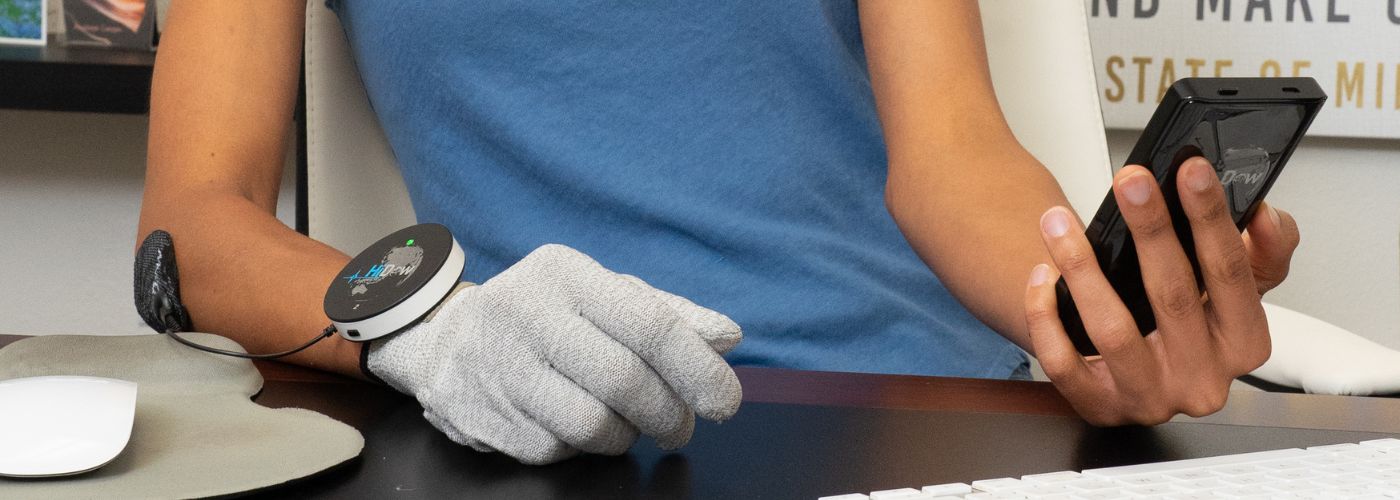Imagine relying on a small, portable device to alleviate your chronic pain, only to find it suddenly ineffective when you need it most. Transcutaneous Electrical Nerve Stimulation (TENS) devices have become essential tools for many individuals seeking relief from discomfort without the use of medications. However, like any technology, these devices can experience malfunctions that leave users out of luck. We’ll be going over signs of a malfunctioning TENS device.
What To Lookout For In A Malfunctioning TENS Device
When using a TENS (Transcutaneous Electrical Nerve Stimulation) device, a malfunction can quickly turn relief into frustration. One key sign of a malfunctioning unit is inconsistent stimulation; if the sensation varies unexpectedly or stops entirely, it may indicate an issue with the electrodes or battery connection.
Regular checks on the electrode pads for wear and tear are essential, as old or damaged pads can hinder effective pain management by failing to deliver adequate electrical impulses.
Additionally, always pay attention to any unusual sounds coming from the device—like buzzing or crackling—which could indicate internal problems requiring immediate attention. Understanding these finer issues not only ensures optimal functioning of your TENS unit but also enhances your overall wellbeing during treatment.
Irregular Pulse Patterns During Treatment Sessions
A malfunctioning TENS device can often be identified by irregular pulse patterns during treatment sessions. These inconsistencies not only disrupt the intended therapeutic effects but may also lead to discomfort or exacerbate existing pain conditions.

If you notice that the sensation of stimulation feels uneven or erratic, it’s crucial to address this immediately, as it may indicate a technical issue with the device’s circuitry or electrode placement.
One way to test the pulse patterns is by monitoring the device while it is in operation. First, ensure that all connections are secure; loose wires or improperly attached electrodes can lead to inconsistent stimulation.
Then, use a diagnostic tool if available, or simply observe how the device responds at different settings—lowering and raising intensity levels should produce predictable changes in sensation.
Skin Irritation or Discomfort at Electrode Pads
One of the most telling signs of a malfunctioning TENS device is skin irritation or discomfort at the electrode pads. If users experience unusual redness, itching, or burning sensations where the electrodes make contact with the skin, it can indicate that something is amiss with the device’s output.
While some initial mild sensations are normal, persistent discomfort may suggest faulty leads or improper pad placement. For those dedicated to alleviating pain through electrical stimulation, this sudden shift from relief to irritation can be both puzzling and discouraging.
In addition to skin issues, an unexpected decrease in pain relief efficacy is another red flag. If you notice that your TENS unit isn’t providing as much comfort over time or requires higher intensities than before to achieve similar results, it may signify underlying problems such as defective circuitry or aging components within the machine itself.
Listening closely to your body’s feedback and tracking performance can help determine if it’s time for a device check-up or replacement. Prolonged reliance on a malfunctioning unit could hinder treatment outcomes rather than enhance them.
Inability to Adjust Settings or Control Intensity Levels
One of the most telling signs that your TENS device might be malfunctioning is the inability to adjust settings or control intensity levels. If you find yourself repeatedly pressing buttons without effect, it’s more than just an annoyance; it’s a signal that something is amiss.

A functional TENS unit should allow for seamless adjustments, enabling you to tailor your pain management experience precisely to your needs. Failure to do so could indicate issues with the device’s control panel or even battery malfunctions during your TENS therapy session.
One way to check the adjustability is by testing each button individually and observing the device’s response. Start by incrementally increasing the intensity; if there’s no change, consider checking whether the batteries are seated correctly or need replacement.
Next, experiment with changing modes—if these settings remain unresponsive as well, this points towards potential electronic failures in the control module.
Failure to Power On or Charge Properly
One of the most apparent signs of a malfunctioning TENS device is its failure to power on or charge properly. If you notice that your device consistently fails to respond after being plugged in, it may signal underlying battery issues or internal connection faults.
A healthy TENS unit should display appropriate indicators when charging and maintaining its power—a stark contrast to the frustration felt when persistent attempts yield nothing.
Equally concerning is if your device powers on but exhibits erratic behavior, such as fluctuating intensity levels without user input. This could point to a faulty control mechanism or interference from outdated software.
It’s crucial not only for the effectiveness of pain relief but also for your safety; unmanaged intensity can lead to discomfort rather than alleviation.
Unusual Overheating of the Device
One of the most concerning indicators of a malfunctioning TENS device is unusual overheating. If you notice that your device becomes excessively warm to the touch, it’s not just a minor inconvenience—it’s a signal that something may be off internally.
Overheating can lead to not only ineffective pain management but also potential safety hazards. Such heat could indicate an electrical fault or failing battery, compromising both performance and your peace of mind during use.
Always monitor it by regularly checking the surface temperature of the device before and during each session. If you detect any significant increase in warmth or if the unit feels hot enough to cause discomfort, it is imperative to stop using it immediately. Disconnecting the power source can prevent further issues while you assess the situation.
Overall, keep all of these signs in mind for a malfunctioning TENS device.

Related Stories
5 Ways to Support Bone Strength with HiDow
World Osteoporosis Day (October 20) October 20 is World Osteoporosis Day, and chances are, you’ve...
Oct
FDA-Cleared Is a Flex. Here’s Why.
Pulling Back the Curtain You’ve seen it on boxes, on websites, in ads: FDA-cleared. It...
Sep
This Is Fibro. This Is Larry.
September is Pain Awareness Month. And we’re not here to give you medical definitions or...
Sep
Train Your Relaxation Reflex
How often do you find yourself struggling to switch off after a long day? With...
Aug
Back To School Fitness: Balancing Academics & Athletics
Most student athletes don’t have a motivation problem. They show up. They train hard. They...
Aug
How to Cope with a Sports Injury
Staying active helps your body stay strong. But sometimes, activity leads to pain, strain, or...
Jul